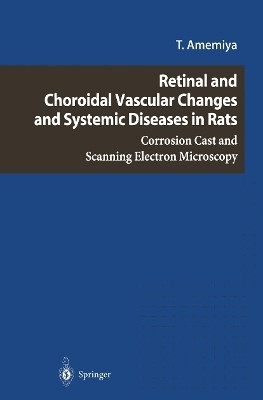Retinal and Choroidal Vascular Changes and Systemic Diseases in Rats(English, Paperback, Amemiya T.)
Quick Overview
Product Price Comparison
Retinal and choroidal vasculatures are easily affected by various systemic diseases, and changes in the retina can easily be observed with various procedures such as direct and indirect ophthalmoscopy, scanning laser ophthalmoscopy, fluorescein fundus angiography, and indocyanin green fundus angiography. Vascular changes are the major, most prominent, and most important fundus changes. The above-mentioned procedures can reveal vascular changes clearly, but mainly reveal changes in the superficial layer of the retina. In addition, these procedures cannot show the three-dimensional architecture of the retina. Usually we can barely obtain the view of that three- dimensional architecture. At the same time, pathological findings are well described, but most of them are based on histological and cytological methods. Thus, three-dimensional description of pathology is rare. Vascular corrosion cast scanning electron microscopy can provide a very useful three-dimensional view of the microvasculature and can demonstrate the fine structural architecture of the capillary network. However, the application of this method to the retinal and choroidal vasculature is very difficult, especially in small eyes. We succeeded in making good corrosion casts of retinal and choroidal vessels in the rat. Using this method during the past 10 years we have examined the retinal and choroidal vascular architecture of rats with various systemic diseases such as aging, hypertension, diabetes mellitus, and arteriosclerosis.


